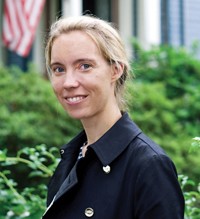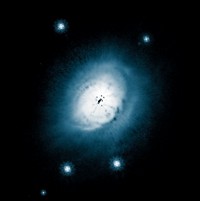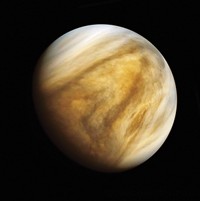Advertisement
Grab your lab coat. Let's get started
Welcome!
Welcome!
Create an account below to get 6 C&EN articles per month, receive newsletters and more - all free.
It seems this is your first time logging in online. Please enter the following information to continue.
As an ACS member you automatically get access to this site. All we need is few more details to create your reading experience.
Not you? Sign in with a different account.
Not you? Sign in with a different account.
ERROR 1
ERROR 1
ERROR 2
ERROR 2
ERROR 2
ERROR 2
ERROR 2
Password and Confirm password must match.
If you have an ACS member number, please enter it here so we can link this account to your membership. (optional)
ERROR 2
ACS values your privacy. By submitting your information, you are gaining access to C&EN and subscribing to our weekly newsletter. We use the information you provide to make your reading experience better, and we will never sell your data to third party members.
Physical Chemistry
Aloha to Space Chemistry
University of Hawaii provides tropical home for studying reactions of cold interstellar space
by LOUISA DALTON
November 22, 2004
| A version of this story appeared in
Volume 82, Issue 47
When Corey Jamieson was looking for a graduate program, Oahu's fine-sand beaches and sun-speckled water weren't the only things that led him to the University of Hawaii, Manoa. A new graduate program in astrochemistry, named Reaction Dynamics, Laboratory Astrophysics & Planetary Sciences, started up there in fall 2002. It's the only one of its kind, says founder Ralf I. Kaiser, associate professor of chemistry at the university, and Honolulu is an excellent spot for its birth.
"The prime directive" of the program, Kaiser says, "is to untangle how important molecules are formed from the bottom up in the interstellar medium and in our solar system." By important molecules, Kaiser means those that might aid in the beginnings of life. Astrobiologists study the origins of life in space. Astrochemists take that study into the laboratory, attempting to simulate the conditions of interstellar space and find out how the molecules that astronomers observe in space might form there.
"I was always interested in space and stars," says Jamieson, now a second-year graduate student in Kaiser's laboratory. Jamieson dabbled in astronomy while earning a bachelor's degree at California Polytechnic State University, where he majored in chemistry and minored in physics. When he decided he wanted to get more serious about space research, the University of Hawaii's new program was a natural pick.
In Honolulu, which is on the island of Oahu, researchers have access to some of the best telescopes in the world, with the Mauna Kea Observatory and its Keck telescopes on the big island of Hawaii just a short plane ride away. Hawaii also has excellent interdisciplinary opportunities in astronomy, geophysics, and chemistry, Jamieson says. And Kaiser's laboratory "is really the only place you can do reactions in every phase," Jamieson adds: gas phase, for experiments relating to the interstellar medium; solid phase, for reactions that happen on the surfaces of planets or on "ices" of water, carbon dioxide, nitrogen, or other substances; and in or on interstellar dust grains.

Jamieson is trying to model the kinetics and mechanisms of reactions that occur on the surface and interior of ices on Pluto and Triton, Neptune's largest moon. He uses a closed-cycle helium refrigerator to achieve reaction temperatures as low as 10 K, the temperature of the interstellar medium. He also irradiates his reactions and performs them in as much of a vacuum as possible to mimic the environment of the extraterrestrial ices he is modeling. Because of the extreme conditions in space, the chemistry there is different from anything you would see on Earth, Jamieson says.
Douglas M. Hudgins, a space scientist in the astrochemistry laboratory at NASA Ames Research Center, agrees. "You have to throw everything you know about chemistry out the window. The temperature is entirely different, as well as the radiation, pressure, and light. The chemistry is completely nonintuitive."
To help simulate the conditions found in the interstellar medium, students use three important instruments, Kaiser says. A solid-state scattering instrument helps them determine how molecules form in ices. A crossed molecular beam instrument helps investigate how molecules form in the gas phase. And a nanoparticle analyzer helps the students analyze the nanoparticulates that might form on other planets or on interstellar dust grains.
Much of the nanoparticle research is led by Klaus D. Sattler, a professor in the department of physics and astronomy at the University of Hawaii. Sattler is a physicist who seeks to understand the formation of nanoparticles on Mars. His group also studies the nanoparticles that form when lightning strikes under various gas and liquid conditions. A liquid struck by lightning will temporarily experience very high temperature and very high pressure in a very small space--ideal conditions for new material formation, Sattler says.
Kaiser stresses that the program is interdisciplinary and welcomes students from astronomy, chemistry, physics, geology, and planetary sciences. Currently, four Ph.D. students are in the astrochemistry program, all chemists in Kaiser's lab. A physics student who will be working in Sattler's lab will join in January, and a geologist will join later. Professors at the University of Hawaii who take part in the program include five at the Institute for Astronomy and two at the Hawaii Institute for Geophysics & Planetology.
RIGHT NOW, students are still receiving degrees from their individual departments, but the investigators in Hawaii hope to start bestowing graduate degrees in the new program next year.Where might Jamieson seek employment when he is finished with his studies? He would consider NASA Ames, where he worked for a summer as an undergraduate. Government agencies and academic institutions are likely his best bet, he says. Industrial jobs in astrochemistry are hard to come by, NASA's Hudgins says; even finding research funding is tough, he adds. Yet Kaiser believes that principles of astrochemistry can easily be applied to industrial processes such as chemical vapor deposition and combustion.
"A lot of hard-core classical chemists still regard astrochemistry as hand waving and too exotic," Kaiser says. "However, since we are combining different internationally recognized research groups and cutting-edge laboratory experiments into one program here in Hawaii, we have the unique chance to change this."





Join the conversation
Contact the reporter
Submit a Letter to the Editor for publication
Engage with us on Twitter